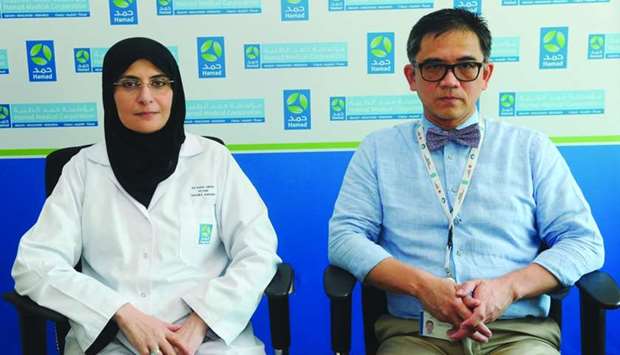
(image)
(image)
Posters released by HMC
Dr Rafael Consunji, director of the Hamad Injury Prevention Program (HIPP) and Dr Aisha Abeid, assistant director of HIPP, the community outreach wing of HMC’s Trauma Surgery Section, said the beginning of the new school year signals a change to the daily routine of many road users. They said all drivers must be more aware of new road environments and keep the speed controlled, especially during the beginning of the new academic year.
“The new academic year beginning is the most dangerous time on neighbourhood streets and in school zones for child-pedestrians, passengers, and bus riders. There is an increase in the number of children walking and riding bikes. Driving quickly through these areas is prohibited and speed is restricted in school zones. Still, students face the threat of accidents,” said Dr Rafael Consunji.
The HMC physician was all praise to the Public Works Authority (Ashghal) for its measures to ensure safety in school zones and developing them into more safe areas.
Dr Aisha Abeid asked drivers of school buses and vans to be aware of students who cross the roads and walk along the streets. “Everyone should extend care towards children and provide them safe road environment,” she said.
“Always walk around your vehicles before backing out the vehicle or leaving a garage" the two physicians stressed noting that a number of children unfortunately are injured by their own parent’s vehicles.
“We caution parents to be realistic about their child's pedestrian skills. Children are impulsive and less cautious around traffic. It is recommended that only children who are older than ten years of age walk or bike to school without adult supervision,” said Dr Consunji.
“If children are walking or biking to school, it’s also a good idea to provide bright-coloured clothing, or reflectors so motorists can easily see them. Make sure your child’s bike and helmet are the correct sizes. He or she should be able to straddle the bike with both feet on the ground and their helmet should fit snugly, sitting low on the forehead. Helmets should always be worn with the chin strap fastened,” the HMC physicians noted.
“While travelling in vehicles, all children must be properly restrained on the rear seat. They must be in a car seat that is appropriate for their age and size and properly restrained, including when travelling on a school bus (if available),” they said adding that it is important to review school bus safety such as waiting for the bus to stop before approaching the curb. “Boarding and exiting should be at designated locations and the children should remain seated while the bus is in motion,” they explained.
Dr Consunji noted that parents themselves must be role models by wearing a seat belt, not texting or talking on mobile phones while driving, wearing the helmet when biking and obeying traffic rules like driving under the speed limit and only crossing the road at designated crosswalks.
“Our children are always watching what we do and they soak in all those information like little sponges. Children and young adults are among the most vulnerable road users and parents are ideally placed to teach their children road safety behaviour,” added Dr Consunji.
